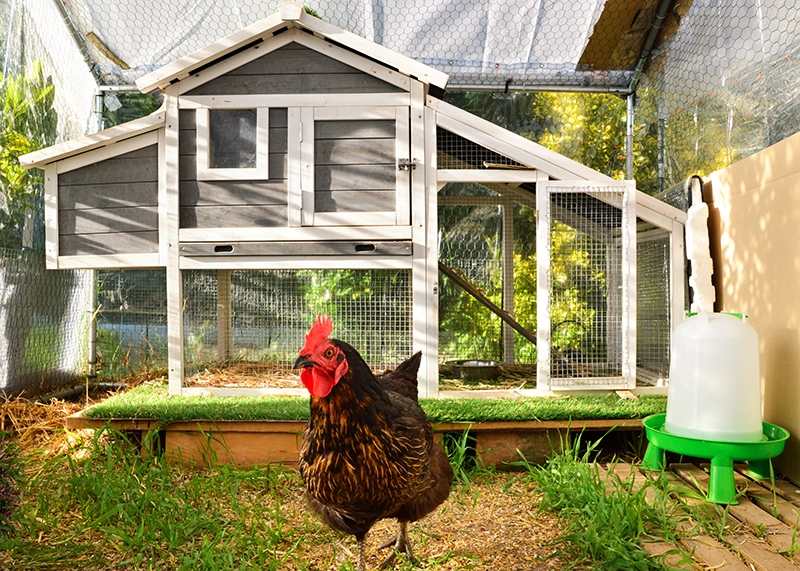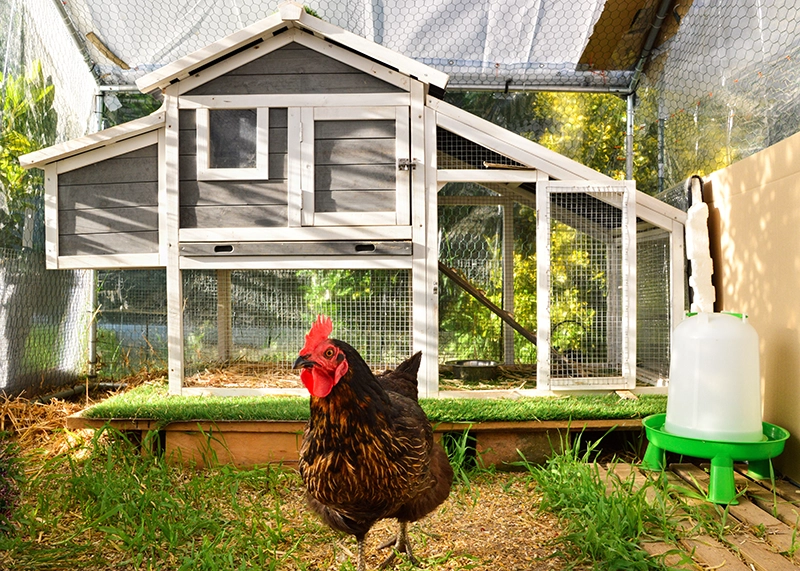Building a Chicken Coop can be fun, but there are five key details you need to understand that will help you decide what size coop to build.

Chicken Coop Plans – Adobe
Required Space: Determining how much space you need to build the chicken coop plays an important design objective. Some people have large farms with many acres available to build, and others can have just a small backyard behind their homes to raise them. With backyard chicken coops becoming increasingly popular, here are the size requirements you should consider for each chicken you plan to have.
Each chicken will need a minimum of 3 to 4 square feet of space in the chicken coop and 10 square feet in the run area of the coop.
To free-range your chickens, each chicken will require approximately 250 square feet of area to roam.
County or City Ordinances: Is it legal to have chickens on your property? Make sure you check with the city and or county laws and regulations because they may have certain restrictions or limitations specific to your area. You may find restrictions like the number of chickens permitted, roster regulations due to noise, distance limits to your neighbor's property, height, or size limitations of the chicken coop. Some cities may not allow you to raise chickens, so please check before building.
Number of Chickens: We have determined that our city does allow us to raise chickens. Now that we know the space requirements per chicken, we can determine how many birds we can have. It is recommended that you raise at least three chickens. So we have decided we want four chickens. Most backyard owners have between 4 to 10 chickens. Always remember that the number you start with tends to get larger rather than smaller. The majority of people that have backyard Chickens enjoy the experience. So if you set everything up correctly initially, you should have the same positive experience.
Size of the Coop: Our chicken coop should be at least 12 to 16 square feet. The run should be 40 square feet. This would be a total of 52 to 56 square feet for four chickens. This would require an area of approximately 6′ X 10′. If you want more chickens, consider the space you have available and determine your size accordingly. If you are going to allow the chickens to be open range during the day, space will be a factor if you have backyard chickens.
Safety: Is your chicken coop run free from predators? Dogs, Raccoons, and other animals will dig under the fence to get to your chickens. You need to consider building the fence into the ground to avoid burrowing by predators. You could consider pouring a concrete foundation under the fence line. You will want at least 2 1/2 feet of clearance between the bottom of your coop and the ground. This has many advantages and can provide shade for your chickens during hot days.
Chicken coops come in all styles and sizes. You can build a simple square box-type house or have a stylish house with a fabulous architectural design. You also might want to consider a “Kit” instead of cutting your lumber.
If you are considering less than 4 to 6 chickens, a “kit” could be a reasonable option. To learn more about different Coop plans, click the link below.
